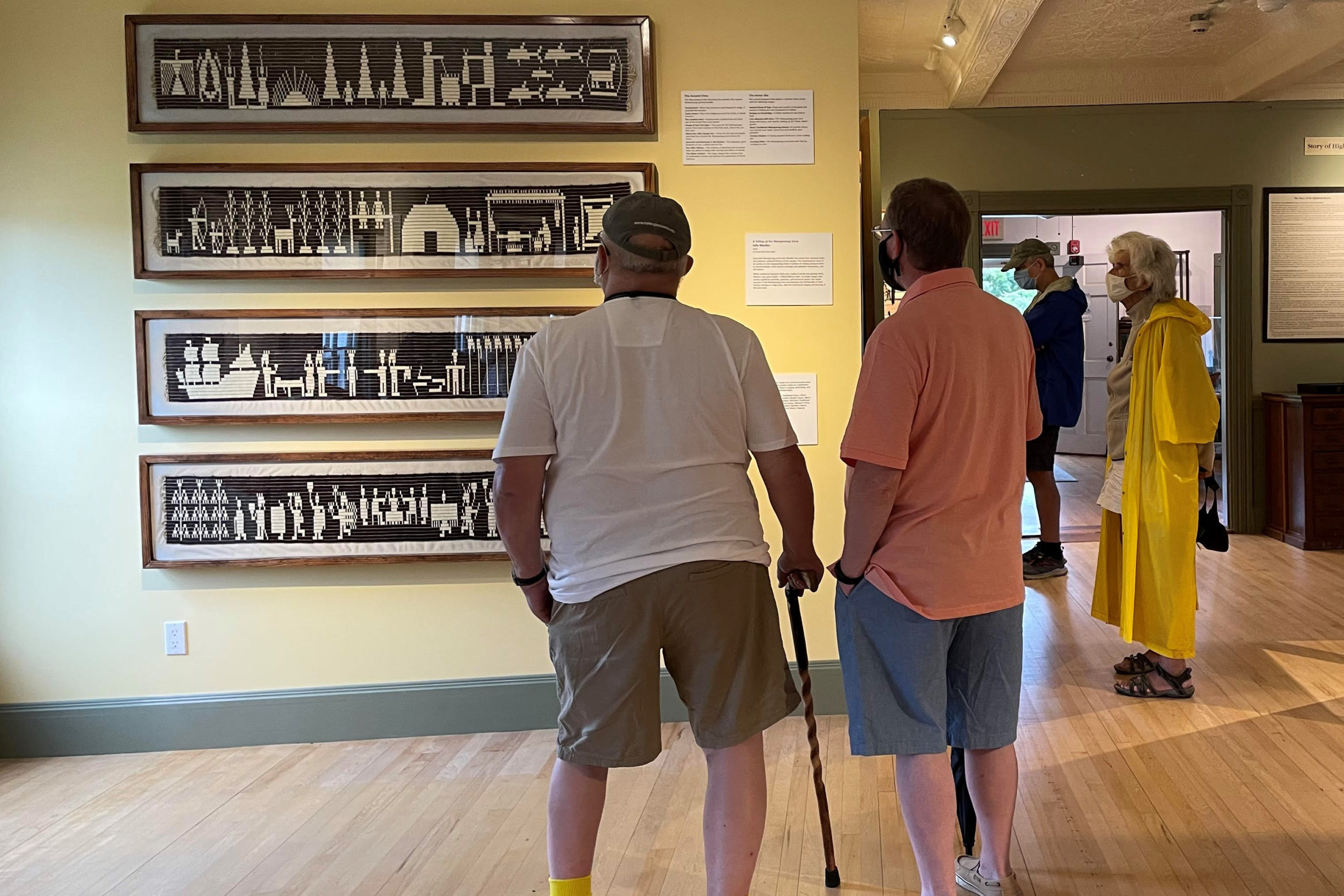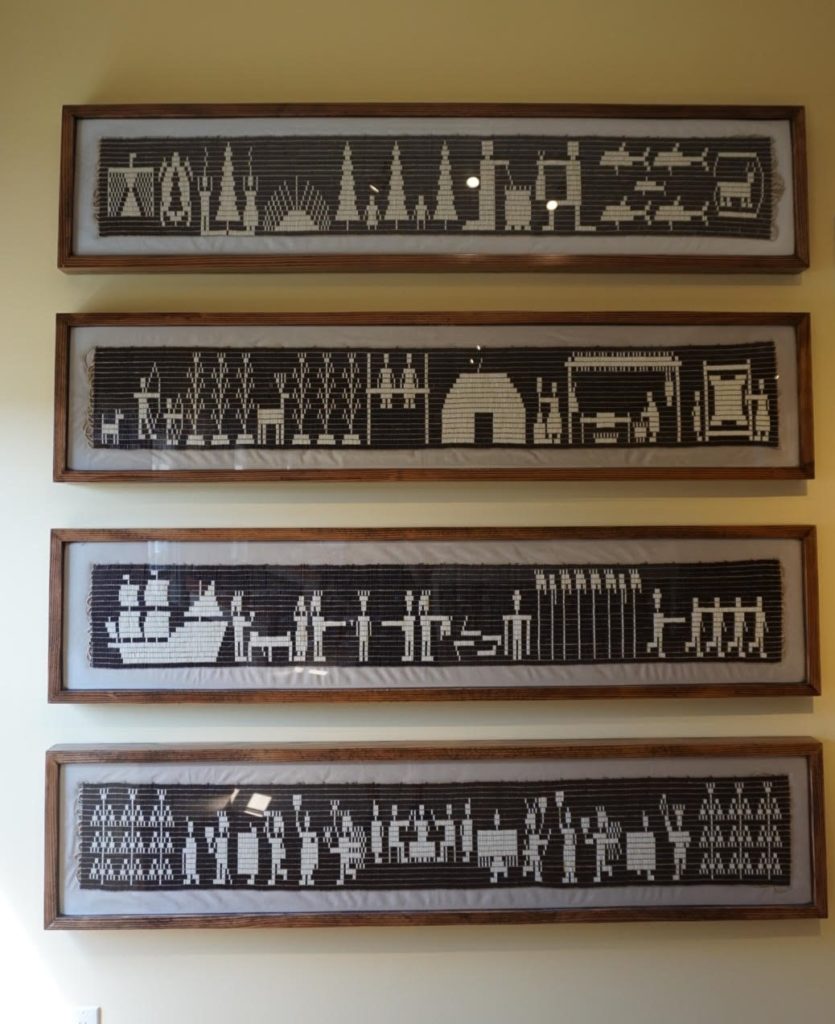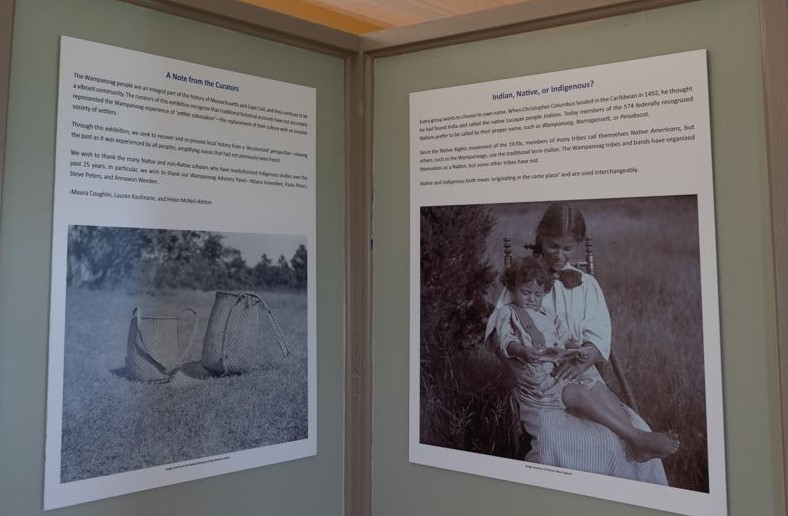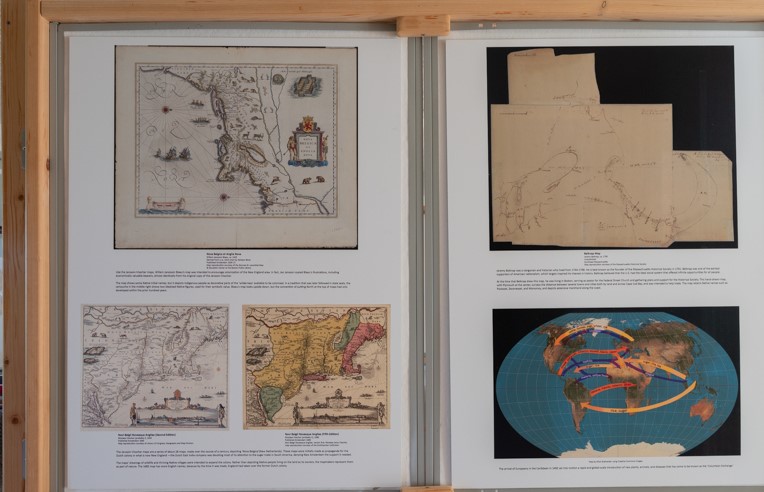Highland House Museum, Truro, MA
Summer 2021
This new permanent exhibition digs into the history and culture of the Wampanoag, the Indigenous People who have lived on Cape Cod and the South Coast of Massachusetts and Rhode Island for more than 12,000 years. Drawing on contemporary craft, archival photography, historical maps, and scholarly research, this seminal exhibit reflects a two-year effort to learn about Wampanoag history, and acquire images, objects, and photographs.
One of the recurrent themes of the exhibit is that despite ongoing loss of land, legal rights, culture, and language, the Wampanoag People have endured. Through carrying on their rich traditions and sacred beliefs, they preserve their history and culture. This theme is revealed in many different ways. The four wampum belts (below)—a contemporary piece made by an Aquinnah Wampanoag artist—illustrate how current members of the tribe continue to practice traditional crafts.




